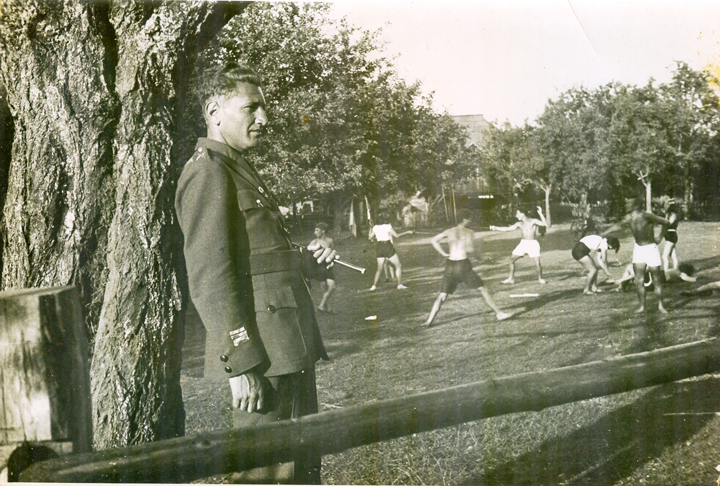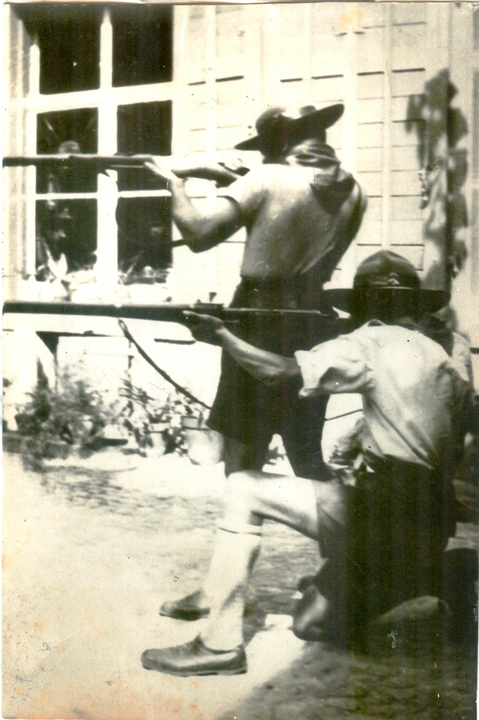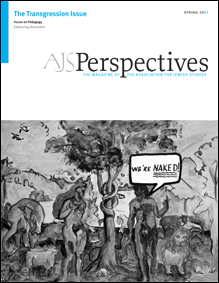
While the activity of these groups is well known, more surprising, perhaps, is the moment and location where rightwing Zionists began to make a case for terrorism and develop a plan to carry out acts of radical violence. It was in Warsaw, not Tel Aviv or Jerusalem, that a blueprint for right-wing Zionist terrorist activity first appeared. Its author, Yirmiyahu Halperin (1901–1962), was provoked by events in Europe, not Mandate Palestine, to write his user's guide to terror and retaliation.

Halperin's arrival to Warsaw in 1931 coincided with a rise in violent antisemitic attacks on university campuses in Poland, Austria, Germany, Romania, and Hungary. Betar members insisted to him that their only option was to launch mass protests in the hope that world leaders would take notice and put pressure on Europe's governments to intervene. Horrified by their reaction, he quipped that their tactics fit comfortably with the longstanding Jewish tradition to "suffer quietly and shut up."
During his first two years in Europe, Halperin had remained begrudgingly faithful to Jabotinsky's public statements on the purpose of Betar's military program. The youth movement's goal, Jabotinsky insisted, was to train chivalrous soldiers for the Zionist cause who would abide by a strict ethical code and only resort to violence in the name of self-defense. Hitler's rise to power and the persistent anti-Jewish violence on university campuses across Europe convinced Halperin to change course.
In the spring of 1933, he published a radical new manifesto in Poland's weekly Betar newspaper. Its title was "Defense through Attack." Drawing attention to the plight of young Jews on European university campuses, Halperin insisted that protests were useless. Even Jewish self-defense groups, he continued, would not deter antisemitic rioters. There was only one option: launch retaliatory attacks. Only when antisemites trembled at the thought of being maimed or killed by groups of vigilante Jews would they think twice about committing an attack.

Halperin's guidebook is not only striking because it is the first instruction manual published by a Zionist organization to promote fighting techniques associated with terrorism. It also highlights how conversations among Zionists about their use of force in Mandate Palestine were inextricably connected to their conversations about anti-Jewish violence in Europe. Halperin saw little need in his guidebook to specify where Betar members should engage in battle. At several points in the text, he would move abruptly from an example of anti-Jewish violence in Europe to one in Mandate Palestine. His descriptions of Jewish retaliation strategies similarly blurred the lines between the Yishuv and Europe.
To what extent did right-wing Zionists embrace Halperin's belief that violence against Jews, no matter their location, merited the same response? During the Arab Revolt, nearly all of the Revisionist movement's leadership echoed his call to fight terror with terror on the streets of Mandate Palestine. But Poland was another matter altogether. Just days before the outbreak of the revolt in April 1936, Jabotinsky began his courtship with the Polish government, seeking military and diplomatic aid for the Revisionist movement's activity in Mandate Palestine. His overtures to the government, which proved fruitful for a time, impacted the extent to which Revisionist leaders responded to antisemitic violence perpetrated by Polish nationalists. Well aware that the Polish government forbade the formation of armed Jewish groups to combat anti-Jewish violence, Revisionist leaders were careful to avoid any public discussion of instances in which their members defied government regulations. Readers of the Revisionist movement's press were far more likely instead to find articles showcasing the similarities between the Zionist and Polish quest for national liberation, and the readiness of right-wing Zionist youth to defend Poland's borders.
Members of Betar, however, tell a different story. Writing in memorial anthologies (yizker bikher) dedicated to Jewish communities destroyed during the Holocaust, former Betar leaders in Poland recounted their decision in the 1930s to form armed squads to combat anti-Jewish rioters, and in doing so, reject the "Polish-Jewish alliance" peddled by their superiors to Poland's government officials. Halperin's guidebook was even cited by some as an inspiration. Describing his efforts in 1938 to form an armed group to confront antisemitic rioters in Tomaszów Mazowiecki, Leon Markowicz noted that Halperin's guidebook not only taught him "how to organize the defense of settlements . . . in the Land of Israel, but also how to organize self-defense from rioters in the Diaspora." Recounting an incident in which Betar members stabbed and critically wounded two Polish rioters in the town of Luboml, Ya'akov Hetman echoed Halperin's call for retaliatory attacks; "It was obvious," he wrote, "that we had to 'pay back' the attackers."
These accounts, written decades later, have to be read with tremendous caution. Many memorial anthologies were published decades after the historical events they describe. Their accounts of the past bear the imprint of the trauma of the Holocaust, nostalgia for a "vanished world," as well as the political and religious commitments of their authors. At the very least, they alert historians to the dangers of presuming that the ideological declarations of Revisionist leaders accurately reflected the beliefs and behaviors of their followers. Right-wing Zionist leaders may have touted their use of retaliatory violence in Mandate Palestine as the ultimate transgression of the rules followed by mainstream Zionist organizations. When it came to Poland, however, the decision of some Betar members to retaliate against antisemitic rioters proved to be a transgression directed against their very movement's leadership.

